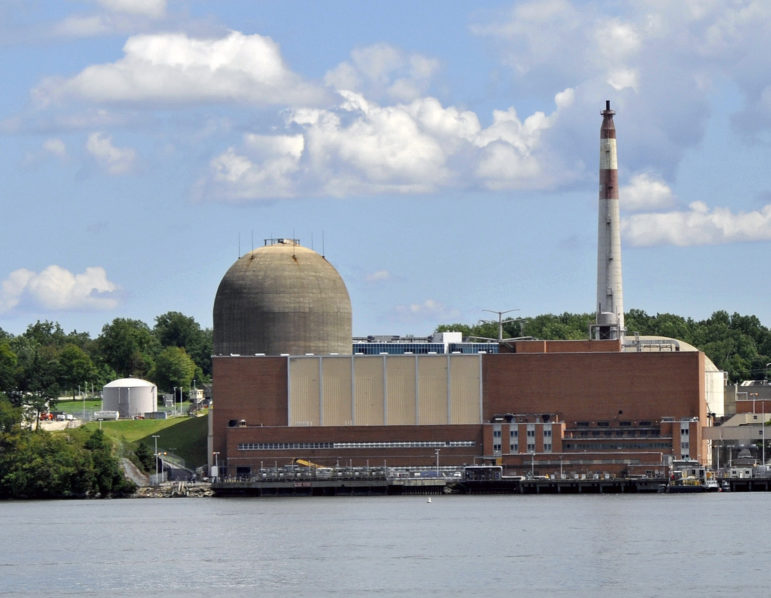
Indian Point
Governor Cuomo has challenged National Grid, the supplier of natural gas for Brooklyn, Queens, and Long Island, to abandon its refusal to install new gas hookups in up to 20,000 area residences, or risk losing its franchise to supply gas in this area. The utility claims that its gas transport facilities are at full capacity, and it must build a new gas pipeline – the Williams pipeline – beneath New York Harbor if it is to supply new customers in its service area. The Cuomo Administration has, at least for the moment, blocked that pipeline because of its potential impact on water quality. But the Metro area faces an even greater gas supply crisis, one involving gas supply that can power millions of homes, as a result of state decisions made in the last several years.
National Grid claims it cannot guarantee service to new customers under current conditions. However, that presumed shortage of natural gas pales in comparison with the shortages that will emerge in the next two years if the Cuomo Administration proceeds with its plan to shut down the two nuclear power plants at Indian Point. These plants, which have been operating for more than forty years and currently supply 25 percent of the metro region’s electricity, are scheduled to be shut down even though they are functioning safely and efficiently, are carbon-free, and could operate for decades longer.
The planned closures are based largely on unwarranted fears spread by environmental groups opposed to nuclear power. The principal justification has been the claimed need to evacuate twenty million people within fifty miles of Indian Point in case of a nuclear accident – an all but impossible task. This supposed need is a fiction that has been around for years, repeated again and again until it is now gospel, despite its having been utterly and scientifically debunked. If such an accident were to occur at Indian Point, our best science, and lessons learned from Fukushima, tell us that there would be 24 to 45 hours warning between the start of an accident sequence and the release of any radioactive material. The best emergency response, in that unlikely event, is to evacuate the innermost two miles of the plant prior to any release, where several thousands (not millions) live, and then shelter downwind if a release actually occurs (this is described in more detail in a detailed report). This modern, evidence-based approach is far simpler, highly effective, and results in an expectation of zero near-term fatalities and zero radiation sickness. Long-term effects, if any, would be too small to be detectable.
When he approved the closure of Indian Point, the governor made a commitment that this would not result in any new carbon emissions. However, the operator of the state’s electric grid has made clear that natural gas-powered generating plants will be fired up to replace the carbon-free electricity flowing from Indian Point. These replacement plants will release more than seven million metric tons of greenhouse gases each year thereafter, confounding the state’s efforts to reduce its carbon footprint and undermining the state’s new climate law before it even gets started. Further, replacing Indian Point with gas-powered electric generators will require the use of inefficient “peaker” plants, usually used only intermittently when electric demand exceeds normal supply. They will add significantly to the area’s air pollution, causing serious health effects and, because of their location, disproportionately impacting low-income, black, and Hispanic neighborhoods, many of them within New York City.
Most urgently, replacing each of these one-gigawatt power plants will require burning enough new natural gas to serve more than a million households. The shortage that National Grid wants to avert will become far worse. Where will all that gas come from? How will it get to New York? This enormous new demand for natural gas dwarfs the supply being withheld right now by National Grid. The state will face a gas supply crisis for which it appears ill-prepared, without any plan for such a large increase in gas supply!
The obvious solution is to keep Indian Point open and to financially support it, as the state is supporting the four upstate nuclear plants. Together, these provide nearly a third of the state’s electricity and over half its clean, carbon-free power. The Indian Point Closure Agreement allows the plant, if necessary, to continue operating through 2024 and 2025. Its current operator, the Entergy Corp., is giving up control of the plants, but the New York Power Authority could safely and efficiently operate them. (NYPA has previously run two nuclear plants, including Indian Point 3.)
The Indian Point plants should remain operational until such time as new, carbon-free resources can, if possible, replace them. This approach supports the state’s emission reduction goals and avoids the coming gas supply crisis.
Leonard Rodberg is a physicist who taught climate change and public policy at Queens College/CUNY until his retirement in 2017. Herschel Specter is an engineer who focused on nuclear safety issues in many positions, including at the Nuclear Regulatory Commission and the International Atomic Energy Agency.









One thought on “Opinion: Cuomo’s Fight with National Grid Shows Need to Keep Indian Point Open”
Great Article. Entergy Corporation and Holtec International, through their affiliates, jointly filed a License Transfer Application Nov. 22 with the U.S. Nuclear Regulatory Commission, requesting approval for the transfer of the NRC licenses for the Indian Point Energy Center to Holtec after the last unit permanently shuts down by April 30, 2021.
https://holtecinternational.com/2019/11/22/holtec-and-entergy-jointly-submit-license-transfer-application-for-indian-point/
https://www.power-eng.com/2019/11/25/entergy-holtec-file-for-license-transfer-of-closing-indian-point-nuclear-units/#gref